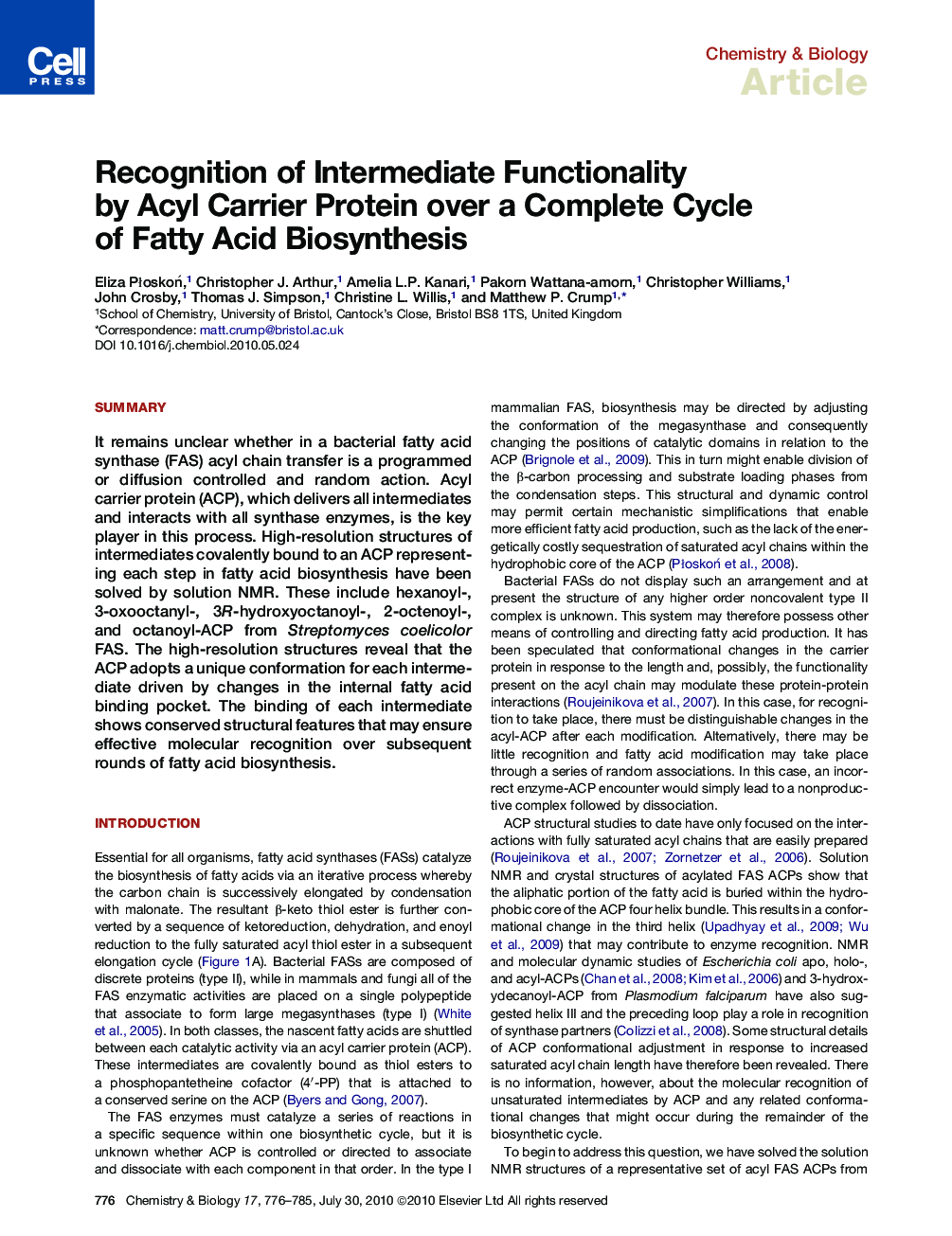| Article ID | Journal | Published Year | Pages | File Type |
|---|---|---|---|---|
| 1392506 | Chemistry & Biology | 2010 | 10 Pages |
SummaryIt remains unclear whether in a bacterial fatty acid synthase (FAS) acyl chain transfer is a programmed or diffusion controlled and random action. Acyl carrier protein (ACP), which delivers all intermediates and interacts with all synthase enzymes, is the key player in this process. High-resolution structures of intermediates covalently bound to an ACP representing each step in fatty acid biosynthesis have been solved by solution NMR. These include hexanoyl-, 3-oxooctanyl-, 3R-hydroxyoctanoyl-, 2-octenoyl-, and octanoyl-ACP from Streptomyces coelicolor FAS. The high-resolution structures reveal that the ACP adopts a unique conformation for each intermediate driven by changes in the internal fatty acid binding pocket. The binding of each intermediate shows conserved structural features that may ensure effective molecular recognition over subsequent rounds of fatty acid biosynthesis.
Graphical AbstractFigure optionsDownload full-size imageDownload high-quality image (204 K)Download as PowerPoint slideHighlights► We present NMR solution structures of five fatty acid intermediate derivatized ACPs ► ACP noncovalently binds each intermediate over a complete biosynthetic cycle ► The burial of the intermediate is modulated by its functionality ► The structure of the ACP changes with the chemistry of the bound intermediate
